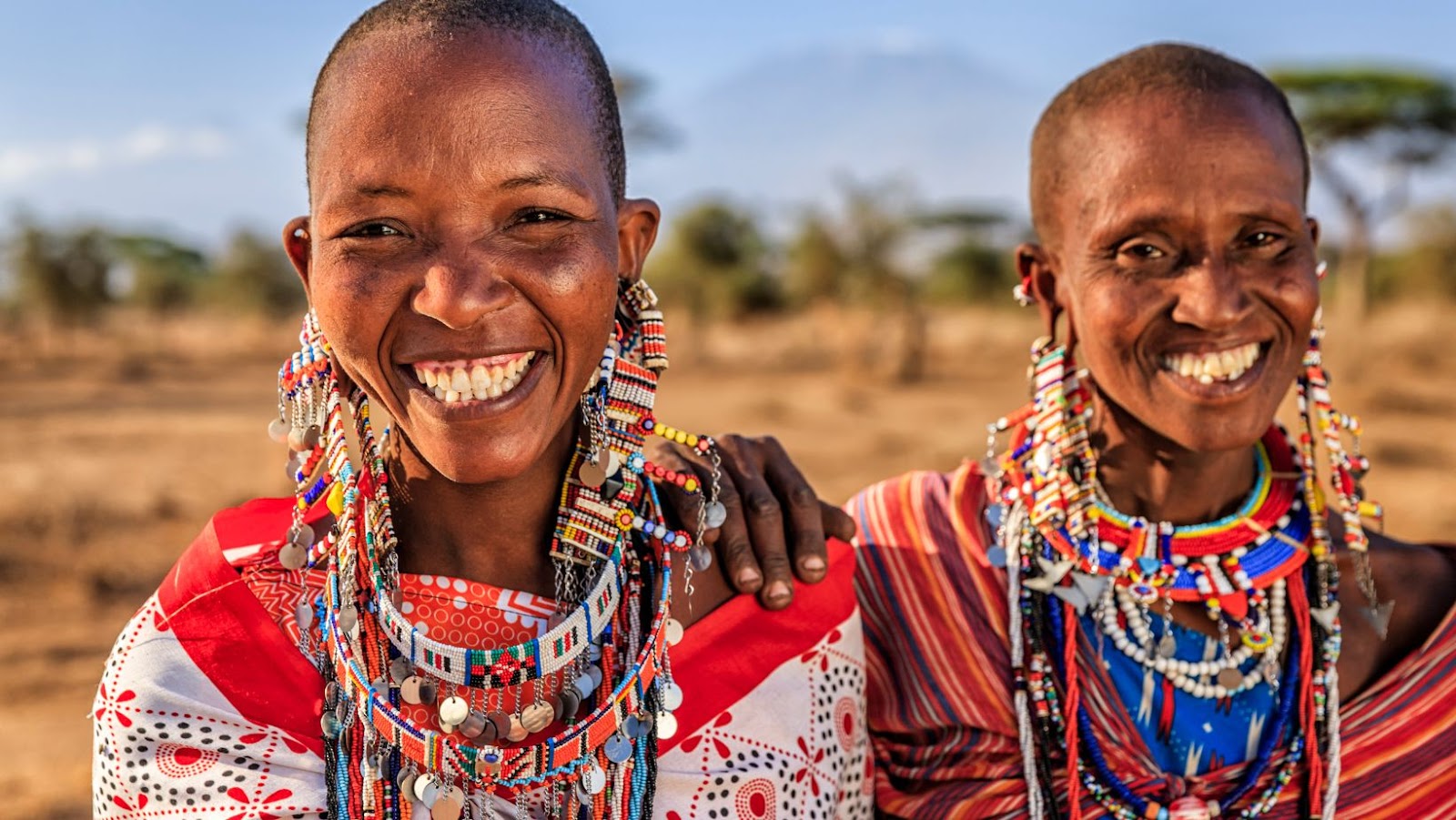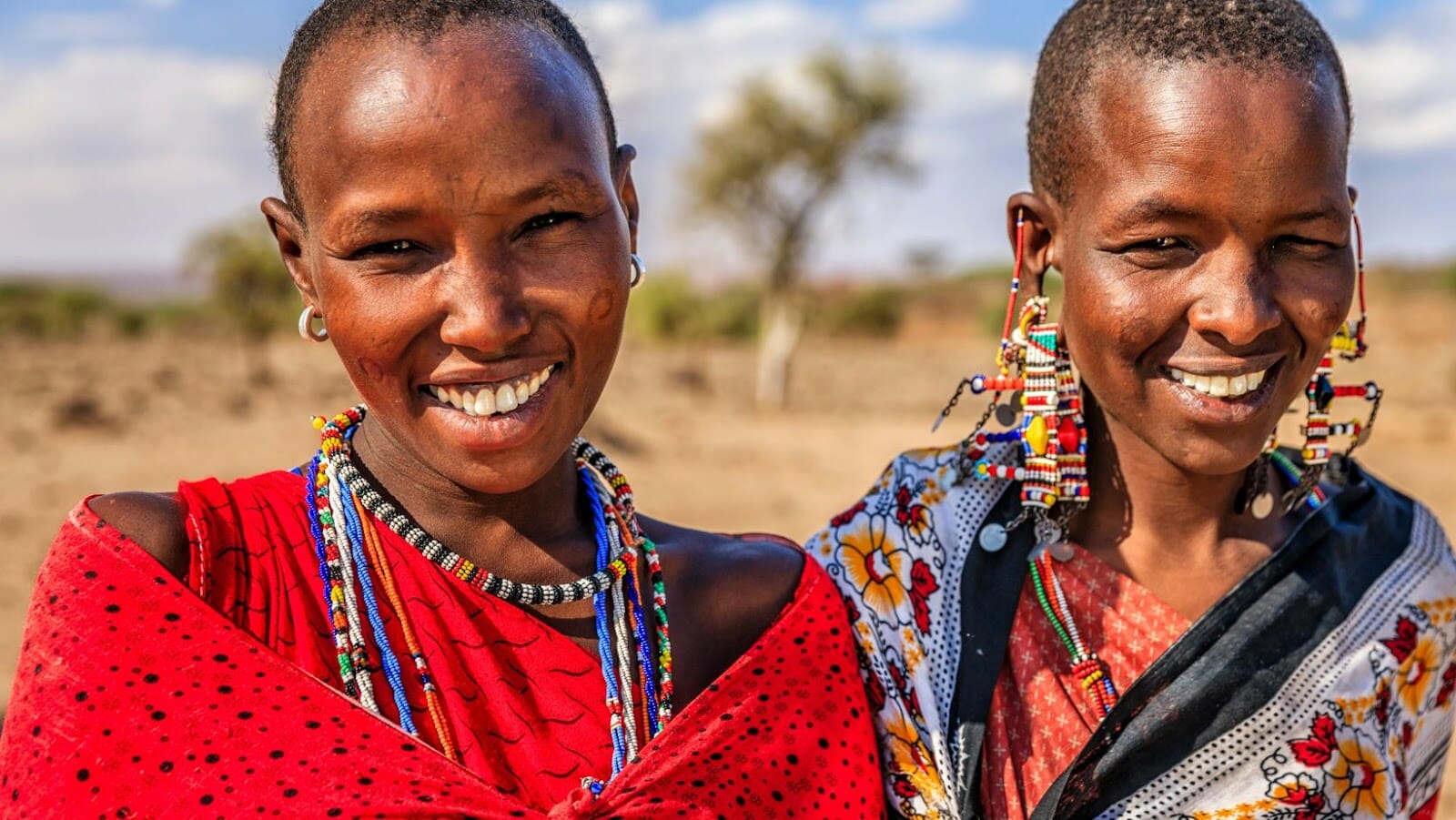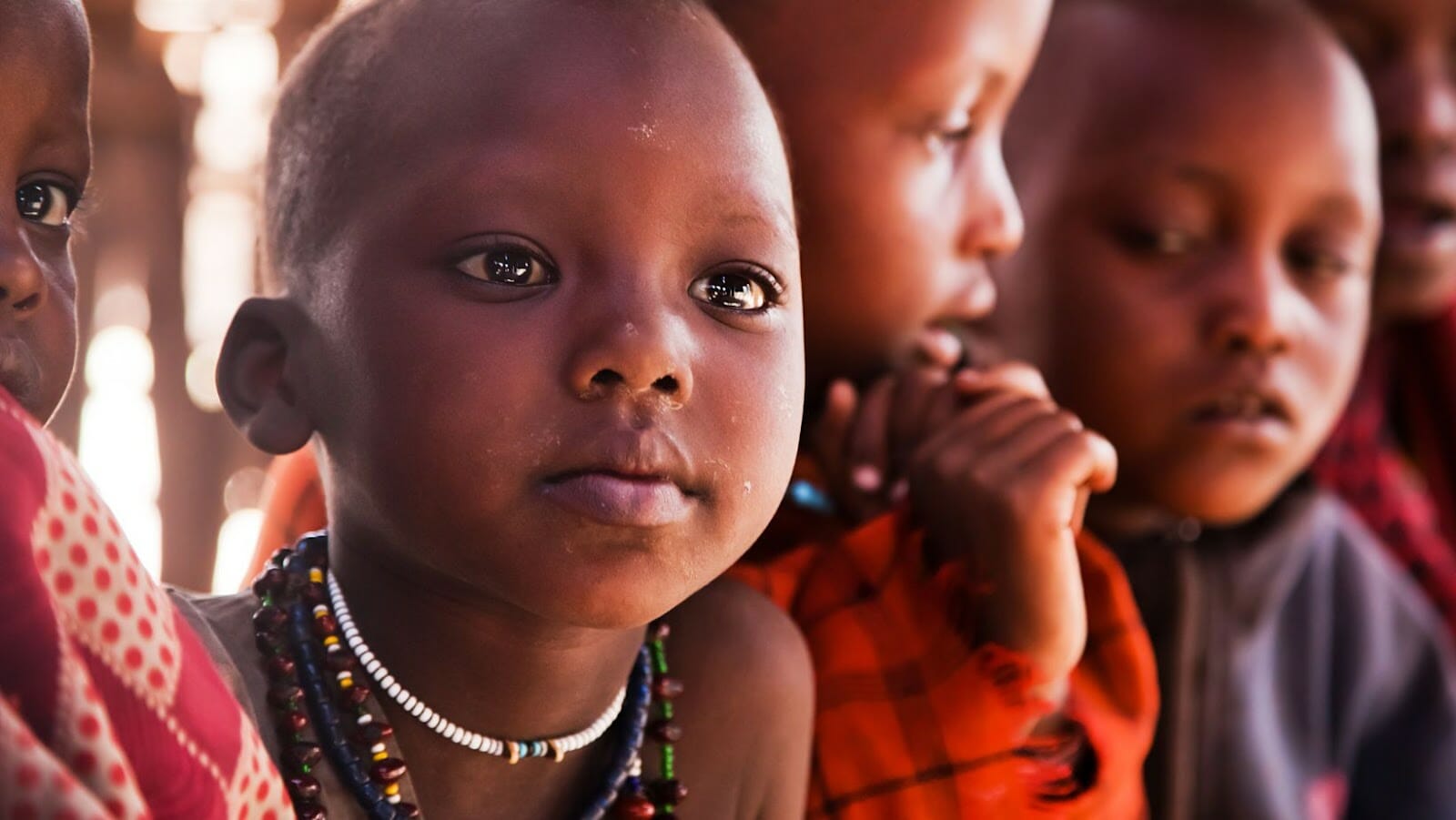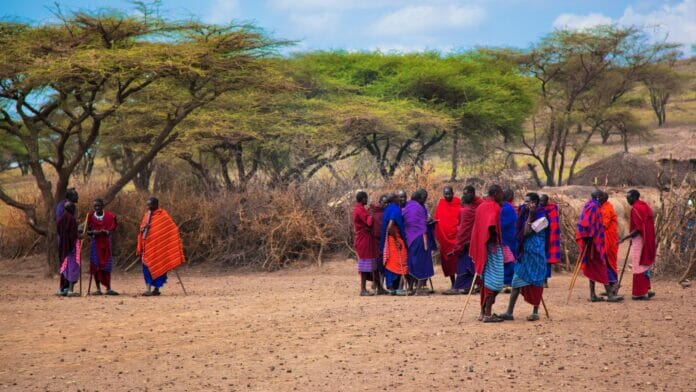According to the Maasai creation myth, their God Engai, or Enkai, gave birth to two sons named Tumai and Sisina. The sons were ordered by Engai to create humans, cattle, and homes for the Maasai. Tumai and Sisina completed this task by bringing soil and water to life, from which humans and cattle were formed. Engai then created the sun, the moon, and the stars as symbols of his power and as a way to help the Maasai keep track of time.
To maintain a good relationship with their God and successfully thrive, Maasai people were instructed by Engai to always respect nature, care for their livestock, maintain kindness and hospitality with each other, and refrain from killing other people. Today, the Maasai tribe is known for their unique customs and traditional way of life, which have been preserved through the generations.
The Maasai Culture
The Maasai people have a long history and culture that dates back centuries, and part of this culture is their creation myth. It tells the story of how the Maasai came to be and is deeply steeped in the traditional beliefs and customs of the Maasai people.
The title of this myth is “The Beginnings of the Maasai” and it features different elements that are typical of traditional creation myths. In this article, we will look at the origins of the Maasai, their creation myth, and the elements that make it unique.
Understanding the Maasai people’s connection to their land
For the Maasai people, the connection to their land is fundamental to their culture, identity, and way of life. From their creation myth to their traditional way of grazing livestock, the Maasai have a deeply spiritual connection to their land.
According to Maasai creation myth, their God, Enkai, created the first Maasai man and woman from a tree on Earth. Enkai gave them cattle and instructed them to cherish and protect them as sacred.
The Maasai people traditionally practise pastoralism, grazing their herds of cattle, sheep, and goats across vast landscapes. The Maasai’s land-use practices foster ecological diversity and a symbiotic relationship between themselves and the natural environment.
The Maasai have also faced many challenges in recent years, including loss of land to tourism and conservation efforts, and the threat of climate change affecting their traditional way of life.
Understanding the Maasai people’s deep-rooted connection to their land can help us appreciate their culture and the importance of preserving their way of life for future generations.
Overview of Maasai traditions and customs
Maasai people, also known as the Maa, are a Nilotic ethnic group mainly known for their distinctive customs, beautiful beaded jewellery, and vibrant clothing that showcases their love for bright colours. Their colourful attire is made from handwoven cloth, featuring intricate beadwork and beautiful embroidery.
The Maasai also have unique and fascinating cultural practices, one of which is their creation myth, which explains how they came to be. According to the Maasai creation myth, the god Enkai, sent down a skydiver, who was responsible for creating the Maasai people. Along with their creation myth, the Maasai have many other equally intriguing traditions that celebrate their way of life and connection to nature. Some of these traditions include the celebration of their children’s first tooth, the dance of the warrior, and the coming of age ceremony.
What Element of a Myth is Featured in the Title “The Beginnings of the Maasai”?
Mythology plays a vital role in the Maasai culture, shaping their beliefs, traditions, and way of life. The Maasai creation myth is the foundation of their faith and cultural identity, and it is passed down from generation to generation through oral storytelling.
According to Maasai mythology, the god Enkai created the world and everything in it. Enkai then sent two spirits, one male and one female, to earth to start human life. These spirits became the first Maasai people and were tasked with caring for the land and its creatures.
The Maasai also believe in a complex spiritual hierarchy with multiple gods and lesser spirits. These entities are often invoked through ceremonial dance and song, and play a role in everything from marriage to hunting to curing sickness.
Pro Tip: If you’re interested in learning more about the importance of mythology in the Maasai culture, consider visiting a Maasai village or talking to a Maasai elder. Their stories and traditions are an essential part of East African history and culture.

The Creation Myth of the Maasai
The Maasai people have long held a creation myth that has been passed down through generations. This myth has traditionally been used to explain the origins of the Maasai and their culture. This story features many of the classic elements of a myth, including gods, creation, and a struggle between good and evil.
Let’s take a closer look at the creation myth of the Maasai.
Overview of Maasai Creation Myth
The creation myth of the Maasai provides a fascinating insight into the origins of this East African tribe and their beliefs on the beginning of the world.
According to the Maasai creation myth, Enkai (also known as Engai) was their God who ruled over the earth and gave birth to two sons: Rom and Namarale.
When Enkai left the earth, he left his sons in charge of maintaining the natural balance of the world – Rom was responsible for the skies, and Namarale for the earth.
The Maasai believe that humans were created from a single tree by the god Enkai. The first human had four sons who were told to take care of the grazing lands and cattle that Enkai had given them.
The creation myth also speaks on the importance of cattle to the Maasai, who believe that their god, Enkai, gave them cattle to ensure their survival.
The myth is not just about the creation of the tribe, but it also reflects the cultural traditions of the Maasai, their way of life, and their reverence for the natural world.
| Pro tip: | Learning about the mythology and beliefs of other cultures can help us gain a wider perspective on the world and our place in it. |
Key Characters in the Maasai Creation Myth
According to the Maasai Creation Myth, Enkai, the supreme God, created two sons, the first of whom was called Naiteru-kop and the second was named Naleto. Together, they formed the key characters in the Maasai Creation Myth.
Naiteru-kop was Enkai’s favourite son and was given the authority to create all living beings on earth. With the help of his brother Naleto, he created all the animals, birds, and insects that roam the earth today.
Naiteru-kop later went on to create the first human couple, whom he instructed on how to live in harmony with all of nature’s creatures.
Naleto, on the other hand, was tasked with creating the landscapes of the earth. He created the mountains, valleys, plains, and rivers in order to provide a home for all the animals and humans that his brother had created.
These two brothers, Naiteru-kop and Naleto, played a pivotal role in shaping the world as the Maasai people know it today. Their creation story is a vital part of the Maasai cultural heritage and is passed down through oral tradition from generation to generation.
Significance of “Engai” in Maasai Mythology
Engai is a significant figure in Maasai mythology, particularly in the creation myth of the Maasai people. According to the myth, Engai is the sole creator of the universe, humanity, and all living things.
The Maasai believe that Engai is a benevolent deity who is responsible for protecting their welfare and guiding them through life. They offer sacrifices to Engai in the form of cattle, sheep, or goats and perform rituals to seek his blessings and guidance.
According to the Maasai creation myth, Engai had two sons, named Tumai and Enkai, who were sent to earth to create humanity and all living things. They were assisted by a female figure named Nalet who helped them shape the first humans out of clay.
The creation myth of the Maasai provides insights into their cultural beliefs and values, highlighting the significance of community, spirituality, and close ties with nature.
Elements of Maasai creation myth
The Maasai people of East Africa have a long and rich creation myth that explains how they came to exist. In the title “The Beginnings of the Maasai”, the element of a myth featured is the plot. It gives us a glimpse into how the Maasai people believe they were created.
In this article, we’ll explore the plot and the other elements of the Maasai creation myth.

The importance of storytelling in the Maasai culture
Storytelling holds a significant place in the Maasai culture, as it helps preserve their traditions, values, and beliefs.
The Maasai creation myth is a crucial example of how storytelling forms an integral part of their culture. According to the Maasai, the world was created by a single deity, Enkai, who had two aspects – Enkai Narok, the black god who created the earth, and Enkai Nanyokie, the red god who created human beings.
The creation myth also describes how the Maasai learned the art of fire-making, hunting, and gathering from a bird named Kurena.
Through storytelling, the Maasai pass down their creation myth and other cultural practices to younger generations. This helps preserve their traditions and values while also providing a sense of community and identity.
| Pro tip: | If you want to understand a culture, listen to their stories. |
The role of supernatural beings in the Creation Myth
In the Maasai Creation Myth, supernatural beings play a crucial role in the formation of the world and the creation of human beings.
| According to the legend, | a high god known as Enkai created the world and all living beings. This god then sent down two spirits, named Namasiyai and Namatiany, to complete the task of creating human beings. |
| Namasiyai and Namatiany made the first man and woman out of clay and presented them to Enkai. | Enkai breathed life into the clay figures and thus created the Maasai people. |
Other supernatural beings also feature in the Maasai Creation Myth, including Oltimpanku, the god of thunder and lightning, and Oltumurenga, the god of protection.
The Maasai people believe that these beings continue to play a vital role in their lives, governing the forces of nature and protecting their community.
Pro tip: Learning about the folklore and myths of different cultures can provide a unique insight into the beliefs and values of different communities, allowing us to better understand and appreciate their cultural heritage.
Relationship between Maasai people and their environment in the myth
In the Maasai creation myth, there is a strong relationship between the Maasai people and their environment. According to the myth, the Maasai were created to live in harmony with nature.
The myth states that God gave the Maasai cattle, which were meant to be their main source of food and wealth. It was said that the cattle were a gift from God, and it was the Maasai’s responsibility to take care of them and ensure their survival.
In return for this gift, the Maasai were given the responsibility of being stewards of the land. They were tasked with protecting the environment, including the plants and animals that lived there, to maintain the balance of nature.
The Maasai creation myth also emphasises the importance of respecting and honouring the environment. It teaches that nature is sacred and that humans have a responsibility to protect it.
Overall, the Maasai creation myth highlights the deep connection between the Maasai people and their environment. It demonstrates the importance of living in harmony with nature and taking care of the land to ensure its survival for future generations.
| Fact: The Maasai are a semi-nomadic tribe that primarily resides in Kenya and Tanzania. |
The significance of the Maasai Creation Myth
The Maasai creation myth is an integral part of their culture, as it explains how their world was created, how the gods shaped their lives and how the Maasai were created. It is a narrative that is often passed down from generation to generation and is a crucial part of their identity.
In this article, we will investigate the significance of the Maasai creation myth and explore how it shapes the Maasai culture.
How the Creation Myth affects Maasai identity and culture
The Maasai Creation Myth plays a significant role in shaping the identity and culture of the Maasai people. According to the myth, the Maasai were created by the god Enkai and given all the cattle in the world. This myth reinforces the Maasai’s connection to the land and their pastoral way of life, as cattle represent wealth and status in Maasai society. The myth also puts a strong emphasis on their relationship with Enkai, which is believed to provide the Maasai with guidance, protection, and blessings.
This belief system deeply influences Maasai cultural practices, including their warrior traditions, communal living, and spiritual rituals. The creation myth is also significant in preserving Maasai heritage and traditions for future generations, ensuring the continuity of their unique way of life.
Relations between Myth and Maasai social organisation
The Maasai people have a complex social organisation that is intimately linked to their creation myth. The myth explains the origins of the Maasai people and their relationship with the natural world.
According to the creation myth, the Maasai god, Enkai, created the world and the animals but did not create human beings. Instead, he gave a special tree to a woman, who was able to eat the fruit and give birth to male and female twins. These twins went on to become the ancestors of the Maasai people.
The myth also explains the Maasai relationship with their environment, emphasising their dependence on the natural world and their responsibility to care for it.
In Maasai social organisation, the myth has specific implications. For example, it establishes the importance of family and ancestry, with clan membership determined by which set of twins a person can trace their lineage back to. It also underlines the significance of livestock, which are central to Maasai economy and cultural practices.
Understanding the relations between myth and Maasai social organisation can help outsiders better appreciate and engage with Maasai culture, as well as shed light on how traditional cultures can be adapted to modern times.
Pro tip: Many traditional societies have creation myths that offer unique insights into their values and worldview. Exploring these myths can deepen our understanding of different cultures and histories.

Modern interpretations of Maasai mythology
The Maasai Creation Myth is an essential part of Maasai mythology and culture that traces the origins of the Maasai tribe to their God, Enkai. The myth offers important insights into the traditional beliefs, customs and practices of the Maasai people.
There have been modern interpretations of the Maasai Creation Myth, which highlight the relevance of the myth to contemporary issues faced by the Maasai people, such as land rights and conservation.
Some modern interpretations emphasise the importance of environmental conservation in the Maasai Creation Myth, which speaks of Enkai’s mandate to manage the earth’s resources sustainably.
Others examine the myth’s relevance to political struggles faced by the Maasai community regarding land rights and sovereignty.
These interpretations demonstrate how the Maasai Creation Myth is a living tradition that evolves to meet the changing needs of the community.


